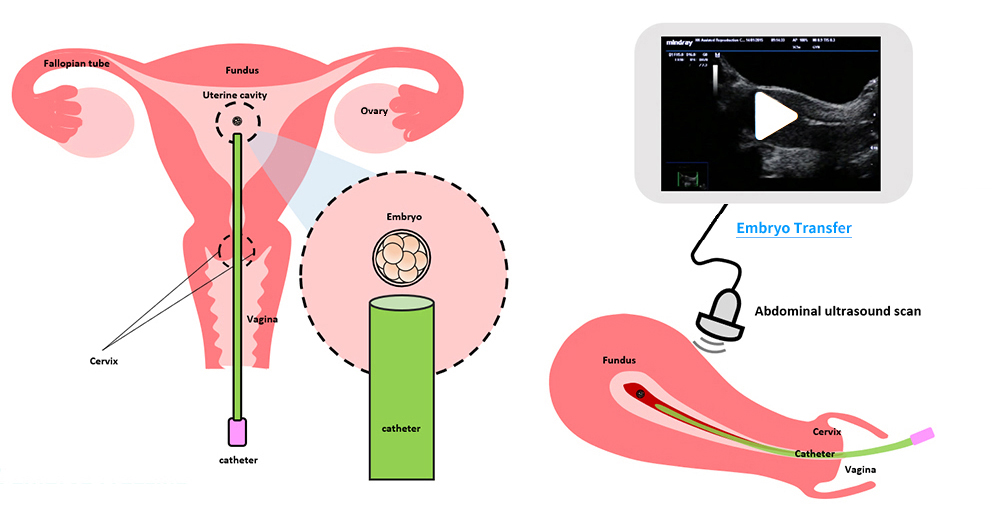Frozen-thawed Embryo Transfer (FET)
During an In-vitro Fertilization (IVF) treatment cycle, embryos may be frozen in the following circumstances:
-
Embryo(s) is / are normally returned to the woman’s womb a few days after the egg collection in the same cycle. Any remaining good quality embryos are frozen for use in the future, in case treatment does not work or to try for a sibling.
-
The doctor may advise the woman to freeze all embryos for transfer in another cycle if she has the following condition(s):
-
If the woman is responding excessively to the stimulation drugs and she has produced too many eggs, she will be at risk of developing ovarian hyperstimulation syndrome (OHSS). If she has embryos transferred in the same cycle and conceives immediately, the chance of her having severe OHSS will be higher and the symptoms will last longer. By having all her embryos frozen, any OHSS symptoms will disappear quickly, thus effectively preventing her from having a severe form of OHSS.
-
The woman’s hormonal response to stimulation drugs is affecting the lining of the womb, making it less receptive to embryos.
-
The woman may have other medical condition that requires treatment before transferring the embryos back to the womb.
-
What happens when a woman wants to use the frozen embryos?
Frozen-thawed embryo transfer can be performed in a natural cycle or a hormone replacement cycle.
-
Natural cycle
If the woman has regular periods, she can have the embryo(s) transferred to her womb in a natural cycle. The doctor will help the woman check the day of ovulation. Once the day of ovulation is known, embryo transfer can be arranged.
-
Hormone replacement cycle
If the woman does not have regular periods, the doctor may suggest using hormones to build up the womb lining. Once the lining is thick enough, embryo transfer can be arranged.
Embryo thawing
On the day of the embryo transfer, the embryologists bring the storage straw which contains the frozen embryo out from the embryo storage tank for thawing, then assess whether the embryo is alive and its quality. Most embryos (~90%) can survive the thawing process. An embryo that survives and is of good quality can be transferred back to the woman’s womb.


 scroll right to see more
scroll right to see more
Embryo transfer
During embryo transfer, a small tube (catheter) is inserted through the cervix (the neck of the womb) and the embryo(s) is/are put into the womb cavity. The procedure is similar to taking a Pap smear test. Anaesthesia or analgesia is usually not required. The woman can go home after embryo transfer and resume work the next day. A pregnancy test can be done usually around 2 weeks later.
 scroll right to see more
scroll right to see more
